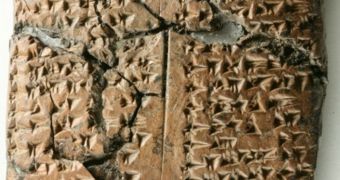An archaeological dig site in southeastern Turkey has recently revealed signs of an ancient language that has since been forgotten. The Ziyaret Tepe site, in the Diyarbakir Province, was once occupied by the ancient Assyrian city of Tušhan, in the upper portion of the Tigris River valley.
Scientists at the University of Cambridge, in the United Kingdom, believe that the language they were able to identify from several artifacts was most likely not native, but was developed by deportees originally from the nearby Zagros Mountains, in neighboring Irak and Iran.
The Assyrian Empire had a knack for deportations and forcibly relocating people throughout its territory. A similar tactic was applied by the Soviet Union, in order to quell ethnic disputes, and to ensure the homogeneity of its population. The experiment was a spectacular failure.
After arriving from the Zagros Mountains, the deportees were most likely forced to work on building the new city, then at the Assyrian Empire's frontiers, and farming the adjacent lands. These people kept their own language as they were engulfed by the great empire.
Cambridge experts say that evidence for this claim comes from a single clay tablet, which was hardened and baked during a fire that destroyed the largest palace in the city, sometime around the end of the 8th Century BCE. The event ensured the tablet could survive for all this time.
Written in cuneiform characters, the official document is basically a long list containing the names of women that worked in the palace, or were otherwise attached to the official Assyrian authorities that administered the city.
The team that conducted the investigation was led by Cambridge McDonald Institute for Archaeological Research professor Dr. John MacGinnis. Researchers published details of their study in the latest issue of the esteemed Journal of Near Eastern Studies.
“Altogether around 60 names are preserved. One or two are actually Assyrian and a few more may belong to other known languages of the period, such as Luwian or Hurrian, but the great majority belong to a previously unidentified language,” MacGinnis says.
“If the theory that the speakers of this language came from western Iran is correct, then there is the potential here to complete the picture of the world’s first multi-ethnic empire. We know from existing texts that the Assyrians did conquer people from that region,” he goes on to say.
“Now we know that there is another language, perhaps from the same area, and maybe more evidence of its existence waiting to be discovered,” the expert concludes.

 14 DAY TRIAL //
14 DAY TRIAL //